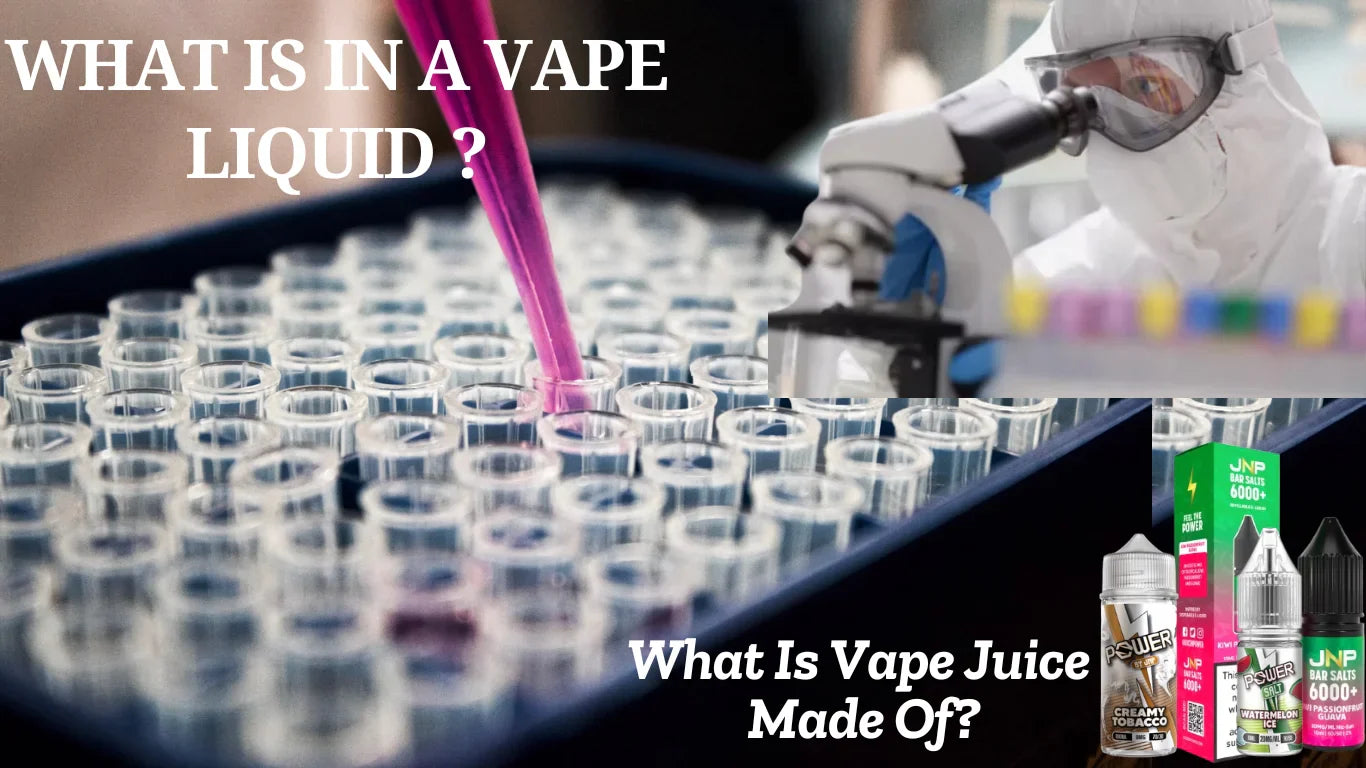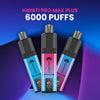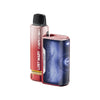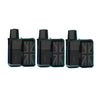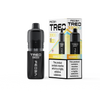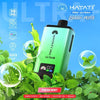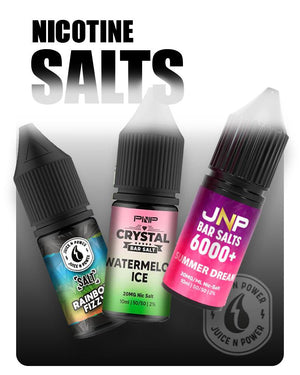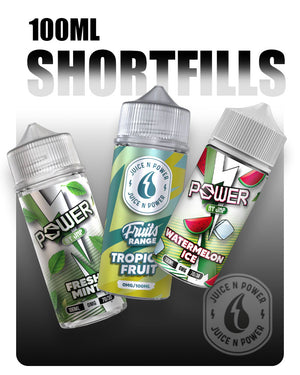Vaping has rapidly transformed from being a fleeting trend into a full-fledged lifestyle choice for millions of people around the world. What was once seen as an alternative to smoking has now evolved into a diverse, dynamic culture. Whether you’re just beginning your vaping journey or you’re a seasoned enthusiast with years of experience under your belt, one thing remains the same — understanding vape liquids is absolutely essential.
Your entire vaping experience hinges on the e-liquid inside your vape device. The composition of that small bottle of liquid plays a pivotal role in determining the quality of every puff. But what exactly makes up vape liquid? How do its components influence flavour, vapour production, and overall satisfaction? In this comprehensive guide, we’ll break down the ingredients of vape liquids, their manufacturing process, and the variety of options available. The more you know about your vape liquid, the more you can customize your experience to suit your personal preferences.
What is in Vape Liquid?

E-liquids (also known as vape juice) are the essential component of the vaping experience. They provide the flavour, vapour, and throat hit that define each puff. Vape liquids are made up of a blend of several key ingredients, each playing a unique role in delivering the desired vaping experience. Understanding what’s inside vape juice can help you choose the right blend. The main ingredients in vape liquid include the following.
Propylene Glycol (PG): PG is a colourless, odourless liquid responsible for carrying flavour and providing the characteristic “throat hit” associated with vaping. It’s thinner in consistency, making it an essential component of most e-liquids.
Vegetable Glycerin (VG): VG is a thicker and sweeter liquid, which produces dense vapour clouds and smooths out the throat hit from PG. It’s a crucial element for those who enjoy larger vapour production and a smoother vaping experience.
Flavourings: The flavours used in e-liquids are food-grade and carefully selected to ensure they are safe for inhalation. These flavourings can be either synthetic or derived from natural sources, offering a huge range of options for every taste preference. The variety of flavours is vast and ever-growing, allowing vapers to experiment and find their perfect match.
Nicotine: For those looking to replicate the sensation of smoking, nicotine is added to e-liquids in various strengths. Alternatively, nicotine-free versions cater to those who enjoy vaping without it.
Distilled Water or Alcohol (optional): Distilled water or alcohol may be included in some formulations to help adjust the viscosity, creating a smoother and more consistent vaping experience. These ingredients are added in small amounts and are carefully selected for their ability to enhance the overall performance of the e-liquid.
What is Vape Juice Made of?

E-liquids come in different formulations, and one of the most important factors influencing your vaping experience is the ratio of Propylene Glycol (PG) to Vegetable Glycerin (VG). This ratio affects everything from flavour delivery to cloud production. Understanding how these ratios work can help you choose the ideal vape juice for your preferences.
50/50 (PG/VG): This balanced ratio offers a moderate throat hit and a reasonable level of cloud production. Ideal for mouth-to-lung (MTL) vapers who prefer discreet vaping, the 50/50 blend provides the best of both worlds.
70/30 (VG/PG): Tailored for direct-to-lung (DTL) vapers, this blend prioritizes thick vapour clouds and a smooth vaping experience. It’s the go-to choice for those who enjoy lung hits and larger vapour clouds.
Higher VG Ratios (e.g., 80/20): For cloud chasers, the higher VG content produces dense vapour clouds with minimal throat hit, perfect for those who value vapour production above all else.
Higher PG Ratios (e.g., 60/40): If you’re looking for an intense throat hit and sharper flavour delivery, higher PG ratios are the way to go. This blend is often favoured by those who enjoy a more traditional smoking experience.
Role of E Liquid Additives
To enhance the flavour and overall experience, some e-liquids include additives that can alter the taste or smooth out the vaping process. These are carefully selected to create a specific vaping sensation and allow for more customization in your vape juice.
Menthol or Cooling Agents: These additives provide a refreshing, cooling sensation, complementing certain flavours and enhancing the overall vaping experience, especially for mint or menthol-based e-liquids.
Sweeteners: Some e-liquids include sweeteners to amplify the flavour, especially in dessert or candy-style juices. While they can enhance taste, be aware that sweeteners may also shorten the lifespan of your vape coils due to their tendency to gunk up the coil faster.
Acids (e.g., Benzoic Acid): Acids like benzoic acid are often used in nicotine salts to smoothen the harshness of high nicotine concentrations, providing a more comfortable and enjoyable vaping experience.
How is Vape Liquid Made?
Manufacturing Process
Ingredient Sourcing: Food-grade ingredients are sourced from reputable suppliers to ensure the quality and safety of the vape liquid. These suppliers provide ingredients that meet strict standards for human consumption, ensuring that only the best raw materials go into creating the final product.
Blending: The ingredients, including base liquids (Propylene Glycol (PG) and Vegetable Glycerin (VG)), flavourings, and nicotine (if used), are carefully measured and mixed in clean, controlled environments. This process is crucial to achieving consistency in flavour and nicotine strength across all batches of e-liquids. The mixing process is typically done in a sterile environment to prevent contamination and ensure purity.
Bottling: Once blended, the e-liquids are sealed in tamper-proof containers to maintain quality, safety, and freshness. Bottling is done in accordance with strict hygiene standards to ensure the product is free from contaminants before it reaches the consumer. The containers are then labeled with all necessary regulatory information, such as nicotine content and ingredients.
Safety Standards in Manufacturing
Reputable manufacturers adhere to stringent safety and quality standards to protect consumers.
Compliance With the Tobacco Products Directive (TPD): E-liquid manufacturers must comply with the Tobacco Products Directive (TPD), which sets rules for the safety, packaging, labeling, and sale of tobacco and nicotine products.
Maintaining ISO-certified Production Facilities: E-liquid manufacturers typically operate in ISO-certified facilities, which ensure that production environments are hygienic, controlled, and meet international quality standards. This certification confirms that the manufacturing process is regulated and that the final product meets the required safety and quality thresholds.
Conducting Regular Lab Testing for Contaminants: Manufacturers routinely conduct lab tests to detect potential contaminants, such as heavy metals, pesticides, or bacteria, ensuring the e-liquids are safe for consumption. These tests are performed on both raw materials and the final product, further minimizing any risks to the consumer.
Dangers of Homemade or Unregulated E Liquids
Without sterile conditions, these products may contain harmful bacteria, mold, or other contaminants. Incorrect ingredient ratios can result in an unpleasant vaping experience or cause health risks. Furthermore, unregulated products may include impurities or toxic chemicals that reputable manufacturers would avoid. To ensure safety, always purchase e-liquids from trusted, reputable brands that follow established manufacturing standards.
Types of Eliquids Available
E-liquids are available in a wide range of options to suit different vaping styles, preferences, and device compatibility.
Freebase Nicotine E-Liquids: Freebase nicotine e-liquids are the traditional choice for vapers, providing a strong throat hit and nicotine kick. They are commonly used in sub-ohm devices and are popular among those who are accustomed to smoking traditional cigarettes. Freebase nicotine allows for higher nicotine concentrations but can be harsher on the throat, especially at higher levels.
Nicotine Salt E-Liquids: Nicotine salt e-liquids are specially formulated to provide a smoother throat hit while delivering higher nicotine levels. This type of e-liquid is ideal for heavy smokers or those who are transitioning from smoking to vaping. Nicotine salts are absorbed by the body more quickly, providing a quicker and stronger nicotine fix with a less harsh experience.
Shortfills: Shortfills are nicotine-free e-liquids that come in larger bottles, typically 50 ml or more, with room to add a nicotine shot. This allows users to customize their nicotine strength according to their preference. Shortfills are popular for those who want to mix their own nicotine levels without purchasing multiple bottles.
50/50 E-Liquids: These e-liquids have a balanced 50/50 ratio of Propylene Glycol (PG) and Vegetable Glycerin (VG), making them versatile and suitable for most vape devices. The balanced ratio provides a good balance between throat hit, vapour production, and flavour. This type of e-liquid is often recommended for beginners or those using pod systems.
Different Forms of E Liquids
E-liquids come in different forms to suit various vaping preferences.
Ready-to-use E-Liquids: These are pre-mixed and ready to use straight from the bottle. They are convenient for vapers who want an easy and hassle-free experience. Ready-to-use e-liquids come in various nicotine strengths and flavour options.
DIY E-Liquids: DIY e-liquids allow vapers to mix their own flavours, nicotine strengths, and base liquids. This gives users full control over the creation of their e-liquid, making it a popular option for those who want to experiment with custom blends. DIY enthusiasts often buy flavour concentrates, PG, VG, and nicotine separately.
Pre-filled Pods: Pre-filled pods are convenient, disposable options designed for pod systems. They come in a variety of flavours and nicotine strengths and are easy to use, requiring no refilling or mixing. These pods are ideal for beginners or those who want a carefree vaping experience.
Concentrates: Flavour concentrates are used by DIY vapers to create custom flavours for their e-liquids. These concentrates must be mixed with PG, VG, and nicotine (if desired) before use. Concentrates allow for a more personalized vaping experience, as users can create unique flavours that suit their preferences.
Nicotine Levels in E Liquids
E-liquids offer a variety of nicotine levels, catering to individual preferences and helping vapers transition from traditional cigarettes to vaping more effectively. Most e-liquids come in a standard range of nicotine strengths, typically ranging from 0mg (no nicotine) to 18 mg or 20 mg per millilitre. For those seeking a more tailored experience, many e-liquids offer the option of custom nicotine strengths.
0 mg: Nicotine-free e-liquids are ideal for recreational users who enjoy the act of vaping without the need for nicotine. These e-liquids are typically used by those who are not trying to quit smoking or simply want a flavourful vape without any nicotine content.
3 mg: Low nicotine e-liquids with 3 mg of nicotine provide a mild nicotine hit for light vapers. This level is commonly chosen by those who have reduced their nicotine intake but still desire a bit of nicotine to satisfy cravings.
6 mg: E-liquids with 6 mg of nicotine are typically used by casual smokers or moderate vapers. It provides a mild but noticeable nicotine hit and is commonly chosen by individuals who need a balance between flavour and nicotine satisfaction.
12-18 mg: Higher nicotine levels, typically ranging from 12 mg to 18 mg, are suitable for heavier smokers transitioning to vaping. These e-liquids offer a stronger nicotine hit, helping users reduce their cravings and gradually move away from traditional cigarettes.
20+ mg (Nicotine Salts): Nicotine salt e-liquids are available in higher nicotine concentrations, often 20 mg or more, and provide a smoother, more efficient nicotine delivery system. This is ideal for vapers who require a stronger nicotine fix or for those who are looking to quit smoking and need a more satisfying experience.
How to Choose the Right Nicotine Level?
Choosing the appropriate nicotine level for your vape is crucial to ensure an enjoyable experience and minimize the likelihood of overconsumption or under-satisfaction. Consider the following when selecting the right nicotine level.
Smoking Habits: Match your current smoking level to an appropriate nicotine strength.
Device Compatibility: Higher nicotine levels pair well with low-power devices, while sub-ohm devices suit lower nicotine strengths.
Personal Preference: Experiment to find your preferred balance of throat hit and satisfaction.
How to Choose the Best Eliquid Flavour?
Selecting the right e-liquid flavour is crucial for enhancing your overall vaping experience. Here’s how to choose a flavour that suits your tastes.
Personal Taste: Start with flavours you enjoy, such as fruity, dessert, or tobacco profiles.
Quality of Flavourings: Opt for trusted brands with high-quality ingredients.
Experimentation: Don’t hesitate to try new flavours to discover your favourites.
How to Choose the Vape Device for an Eliquid?
The type of vaping device you use can significantly affect how well your e-liquid performs. Here’s how to choose the right device for your e-liquid.
Pod Systems: These are compact, easy-to-use devices that work well with nicotine salt e-liquids and high-PG (propylene glycol) e-liquids.
Sub-ohm Tanks: These devices are perfect for those who enjoy large clouds and smooth vapour. Sub-ohm tanks work best with high-VG (vegetable glycerin) e-liquids, which are thicker and produce more vapour.
Disposable Vapes: For beginners or casual users, disposable vapes are a great choice.
Common Misconceptions About Vape Juices
There are many myths and misunderstandings surrounding vape liquids, often leading to confusion among vapers and non-vapers alike. Let’s address some of the most common misconceptions and clarify the facts.
Vape Liquids Are Unsafe
High-quality, regulated e-liquids undergo strict safety and quality checks to ensure they are safe when used responsibly. Reputable brands manufacture their vape liquids in certified labs, using food-grade and pharmaceutical-grade ingredients.
All Vape Liquids Contain Nicotine
A significant number of e-liquid brands offer nicotine-free options, allowing users to enjoy the vaping experience purely for flavours and vapour production.
Vape Liquids Are All the Same
Variations in PG/VG ratios, nicotine levels, and flavour profiles offer a diverse range of experiences.
DIY Eliquids Are Just as Good
While some experienced vapers may attempt to create their own e-liquids, homemade e-liquids often lack the safety, consistency, and quality control of professionally manufactured products.
As the vaping industry continues to evolve, regulatory bodies are imposing stricter guidelines to ensure safety and transparency in product labelling. If you choose to vape, it’s crucial to source e-liquids from reputable brands that adhere to quality standards and avoid products with unknown or harmful additives. Staying informed about vape liquid ingredients can help users minimize risks and make choices that align with their personal health and preferences. Check out our expert-recommended e-liquids for the ultimate vaping experience.

